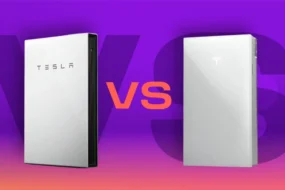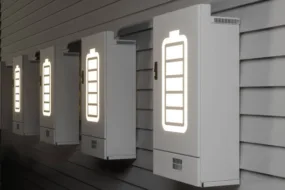Renewable energy insurance:

The sun is shining, the wind is blowing, and you’re harnessing the power of nature to create clean, renewable energy. It’s a fantastic feeling, but even the most sustainable projects need a safety net. That’s where renewable energy insurance comes in.
This specialised coverage protects your investment from unexpected events, giving you peace of mind and ensuring your green project keeps generating clean power. So, how exactly does it work? Let’s dive in and explore the world of renewable energy insurance.
Why do you need renewable energy insurance?
The renewable energy sector is booming. According to the International Renewable Energy Agency (IRENA), the amount of renewable energy capacity added to energy systems around the world grew by 50% in 2023, reaching almost 510 gigawatts (GW), with solar PV accounting for three-quarters of additions worldwide. That’s a massive amount of clean energy powering our homes and businesses.
But even the most robust renewable energy systems are susceptible to risk. Here are some common threats:
i. Property Damage: Windstorms, hail, lightning, and even falling trees can damage solar panels, wind turbines, and bioenergy equipment.
ii. Business Interruption: A damaged system means lost energy production. Renewable energy insurance can help recoup lost income while repairs are underway.
iii. Construction Delays: Unexpected setbacks during installation can throw your project timeline off track. Insurance can cover these delays and keep your project on budget.
iv. Third-Party Liability: If your renewable energy system causes damage to someone else’s property or injures someone, liability insurance protects you from financial repercussions.
Without proper insurance, these events could cripple your project financially. Renewable energy insurance acts as a shield, safeguarding your investment and ensuring your clean energy dream becomes a reality.
Read more: Single-Axis Solar Tracking: Is It Right for Your Home?
What does renewable energy insurance cover?

Typically, renewable energy insurance policies cater to the unique requirements of your project. However, some common coverage options include:
i. Construction and Erection All Risks (EAR): This covers damage to your equipment during installation, from theft and vandalism to weather events.
ii. Operational All Risks: Once your system is up and running, this coverage protects it from damage during operation.
iii. Business Interruption: This reimburses you for lost income if your system goes offline due to a covered event.
iv. Delay in Start-Up: If unexpected delays during construction push back your project’s completion date, this coverage helps you recoup associated costs.
v. Pollution Liability: In case of accidental leaks or spills from bioenergy systems, this insurance protects you from environmental cleanup costs and third-party claims.
It’s important to work with a qualified insurance broker who understands the unique risks associated with renewable energy projects. They can help you customise a policy that meets your specific needs and budget.
The Different Types of Renewable Energy Insurance
The specific type of renewable energy insurance you need depends on the type of system you’re installing. Here’s a breakdown of some common options:
1. Solar energy insurance
Solar projects can run the risk of panel damage or theft. Insurance for solar energy usually covers:
i. Physical Damage: Protection against severe weather, such as hail or strong winds.
ii. Performance Guarantees: This ensures the system performs as expected, compensating for shortfalls.
iii. Theft and Vandalism: Covers stolen or damaged panels.
2. Wind Energy Insurance
Wind projects can have risks like turbine failure or lightning strikes. Wind energy insurance typically includes:
i. Turbine Damage: Electrical damage to turbines can occur due to lightning, storms, or mechanical problems.
ii. Revenue loss: compensates for lost income if turbines stop working.
iii. Construction Phase Risks: Covers risks during the installation of turbines and other structures.
3. Hydropower Insurance
Hydropower projects can pose risks like dam failures or changing water levels. Hydropower insurance usually covers the following:
i. Structural Damage: Covers dams, generators, and other structures.
ii. Flood Risks: Protect against flood damage.
iii. Operational Interruption: Compensates for lost income if the project stops.
4. Bioenergy Insurance
Bioenergy projects, such as biomass and biogas, risk equipment failure or supply disruptions. Bioenergy insurance often includes:
i. Equipment Breakdown: Covers biogas digesters, biomass boilers, and other equipment.
ii. Supply Chain Disruption: Protects against material supply interruptions.
iii. Environmental Liability: This covers claims for environmental damage.
By choosing the right type of insurance, you can ensure your specific renewable energy project is comprehensively protected.
Read more: Tesla Powerwall 3 and 2: Which One Will Boost Your Home?
What are the benefits of renewable energy insurance?

The benefits of having renewable energy insurance are clear:
i. Peace of Mind: Knowing your investment is protected allows you to focus on the positive impact your renewable energy project is making.
ii. Financial Security: Insurance protects you from the financial burden of unexpected events, ensuring that your project remains viable.
iii. Project Financing: Many lenders require renewable energy projects to have insurance in place before approving financing.
iv. Risk Management: A comprehensive insurance policy helps you identify and mitigate potential risks, protecting your project from unforeseen circumstances.
Investing in renewable energy is a smart decision for the environment and your wallet. Renewable energy insurance adds another layer of security, allowing you to save on energy consumption and encouraging the green revolution.
The Challenges of Renewable Energy Insurance
While incredibly beneficial, renewable energy insurance isn’t without its challenges. Here are some things to consider:
i. Cost: Renewable energy insurance premiums can vary depending on the size and type of your project, your location, and the specific risks you want to cover. It’s important to compare quotes from different insurers to find the best coverage at a competitive price.
ii. Emerging Technology: The renewable energy sector is constantly evolving. This can make it challenging for insurers to accurately assess the risks associated with newer technologies. However, as the industry matures, insurance options should become more readily available and comprehensive.
iii. Policy Complexity: Renewable energy insurance policies can be complex documents with specific exclusions and limitations. It’s crucial to work with a knowledgeable insurance broker who can explain the policy details and ensure you understand what’s covered and what’s not.
You can navigate the insurance process effectively and secure the right coverage for your renewable energy project.
Read more: How Long Do Tesla Powerwalls Last?
How much does renewable energy insurance cost?
Unfortunately, there’s no one-size-fits-all answer to this question. Several factors determine the cost of renewable energy insurance, including:
i. Project Size and Type: Larger projects, as well as those utilising newer technologies, are typically subject to higher insurance premiums.
ii. Location: Areas with high theft rates or severe weather events may have higher insurance costs.
iii. Coverage Options: The more comprehensive your coverage, the higher the premium will be.
iv. Claims History: Keeping a record of previous claims can increase your insurance costs.
Here’s a ballpark figure: For a typical residential solar panel system, you can expect to pay somewhere between $1,000 and $3,000 annually for insurance. For larger commercial projects, the cost can vary significantly depending on the factors mentioned above.
The key takeaway is to get quotes from multiple insurance providers to compare rates and coverage options.
How do you get started with renewable energy insurance?

Ready to explore renewable energy insurance for your project? Here are some steps to get you started:
i. Consult with a Renewable Energy Specialist: An experienced professional can help you assess your project’s specific risks and determine the type of coverage you need.
ii. Gather Project Information: Compile detailed information about your project, including its size, location, technology type, and estimated value.
iii. Contact Insurance Brokers: Get quotes from several reputable insurance brokers specialising in renewable energy projects.
iv. Compare Coverage Options: Carefully review each policy’s inclusions, exclusions, and limitations to ensure it meets your needs.
v. Ask Questions: Don’t hesitate to ask your insurance broker any questions you have about the policy or the insurance process.
By following these steps, you can secure the right renewable energy insurance policy for your project, giving you peace of mind and ensuring a smooth journey towards a greener future.
How do you find the right renewable energy insurance provider for your project?
Finding the right insurance provider is crucial. Look for a company with experience in the renewable energy sector and a strong understanding of the unique risks involved. Here are some tips for finding the perfect fit:
i. Get quotes from multiple providers: Don’t settle for the first offer you receive. Shop around and compare coverage options and pricing.
ii. Ask about their experience with renewable energy. Ensure the provider has a proven track record of insuring renewable energy projects.
iii. Read the policy details carefully: Understand what the policy covers before signing.
iv. Ask questions: Don’t hesitate to ask the provider questions about the policy and how it would apply to your specific project.
By following these tips, you can find a renewable energy insurance provider that offers the coverage you need at a competitive price.
Read more: How to Build an Advanced Solar Energy Tracker
Case Studies: Successful Renewable Energy Insurance Implementation
Case Study 1: A California Solar Farm
A solar farm in California faced risks from wildfires and extreme weather. With renewable energy insurance, the project:
i. Protected against wildfire damage.
ii. I got compensation for lost income during downtime.
iii. increased investor confidence, leading to more funding.
Case Study 2: A wind farm in Scotland

A wind farm in Scotland had issues with turbine failures due to severe weather. With the right insurance, the project:
i. covered the costs of turbine repairs and replacements.
ii. I got compensation for operational interruptions.
iii. improved financial stability and project success.
Case Study 3: A Brazilian Hydropower Plant
A hydropower plant in Brazil faced problems with changing water levels. By getting renewable energy insurance, the plant:
i. Protected against infrastructure damage from floods.
ii. I got compensation for lost income during operational stops.
iii. met regulatory requirements for environmental liability.
How to Make a Renewable Energy Insurance Claim

If your renewable energy system is damaged or suffers a loss, filing a claim with your insurance company is crucial. Here’s a general process to follow:
i. Review your policy. Familiarise yourself with your specific coverage details and understand what constitutes a covered event.
ii. Contact your insurance company: Promptly report the incident to your insurance provider and initiate the claims process.
iii. Document the damage: Take detailed photographs and videos of the damage and collect any relevant documentation.
iv. Cooperate with the Adjuster: An insurance adjuster will be assigned to assess the damage and determine the value of your claim. Provide them with all requested information and cooperate fully throughout the process.
Follow these steps and maintain clear communication with your insurance company to ensure a smooth claims process and a faster resolution.
Read more: Exploring the Risks Linked with Natural Gas Investment
What does the future hold for renewable energy insurance?
The renewable energy sector is constantly evolving, and so too is renewable energy insurance. As technology advances and new types of renewable energy systems emerge, we can expect to see insurance policies adapt accordingly. Here are some trends to watch for:
i. Increased Focus on Cyber Security: With more renewable energy systems incorporating digital components, cyber security threats are becoming a growing concern. Insurance policies may start offering coverage for cyberattacks that disrupt energy production.
ii. Parametric Insurance: This innovative approach triggers payouts based on pre-defined parameters, such as wind speed exceeding a certain threshold for a wind turbine. Parametric insurance can offer faster and more efficient claim resolution.
iii. Data-Driven Risk Management: As data collection and analysis become more advanced, insurance companies may use this information to offer customised policies with more targeted risk mitigation strategies.
By embracing these advancements, renewable energy insurance will continue to play a vital role in supporting the growth and sustainability of the clean energy sector.
Conclusion
Renewable energy is the future of clean power generation. While these projects offer significant environmental and financial benefits, they are not without risks. Renewable energy insurance acts as a safety net, protecting your investment from unforeseen events and ensuring the continued success of your green project. By understanding the different types of coverage available, the benefits and challenges involved, and the steps to get started, you can make informed decisions and secure the peace of mind you deserve. So, embrace the power of the sun, the wind, and other renewable resources, and let insurance be your partner in creating a sustainable future.








